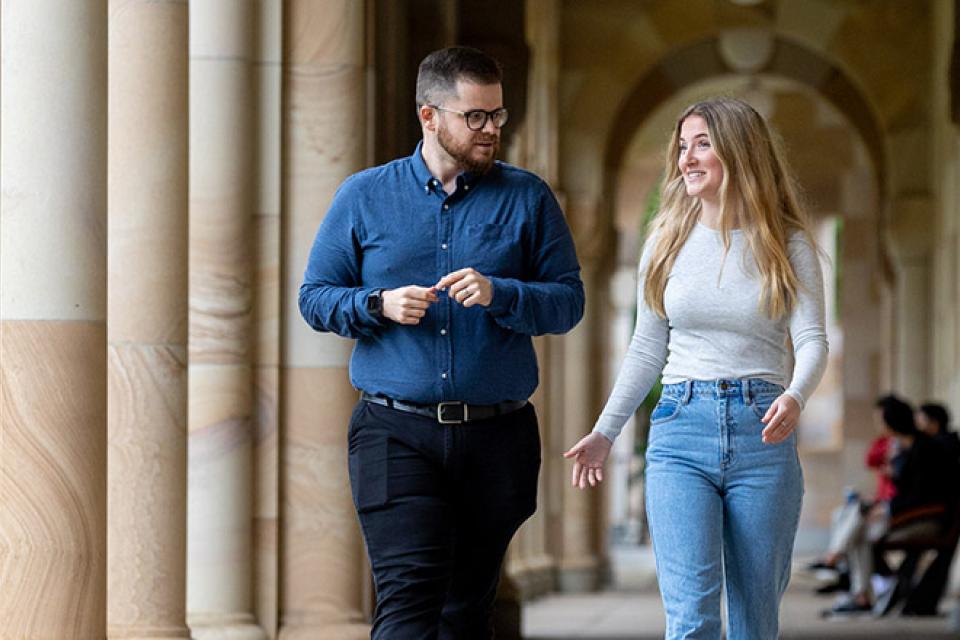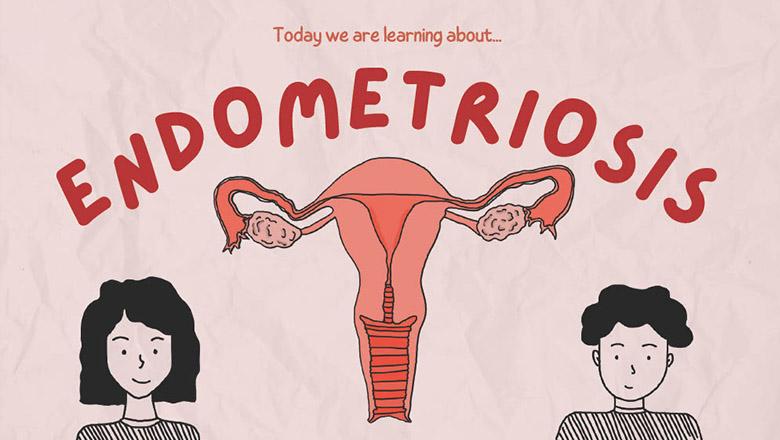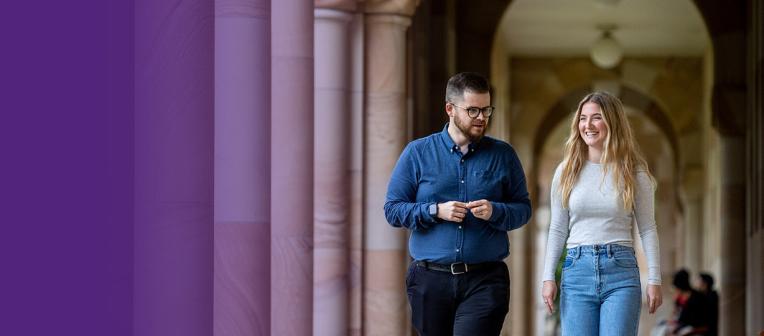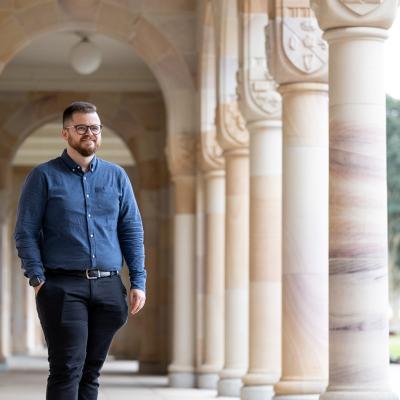Imagine a world where we could use design to create better experiences for people with chronic illnesses. Aaaaand stop imagining. Because it’s happening right now at UQ.
UQ’s Bachelor of Design is about so much more than making things look good, according to lecturer Dr Sean Peel and first-year Design student Maddison Pledger-Dunn. It’s about problem-finding and problem-solving, creating change and having a positive impact on the way people live their lives.
With design, we can learn more about people and understand the motivations behind their experiences and their actions. We place ourselves in their shoes, analyse their problems, and brainstorm solutions. This is a particularly exciting process when considering design for medicine and healthcare, and how it could improve quality of life.
So, what’s design for medicine and healthcare all about, and how are UQ Design undergrads contributing to this vital area?
First, let’s introduce the two key people who will be helping us navigate these questions.
Introducing Sean: the lecturer, the legend
Sean coordinates and teaches the first-year Bachelor of Design course Design: Experience. He’s done amazing stuff like consulting on 3D-printed implants for the head and neck and conducting research to enhance the patient experience of using an entirely artificial heart.
Sean is super passionate about utilising design to create solutions linked to genuine human needs. None of this design for design’s sake business 🙅♂️, which he argues can become unsustainable and wasteful. He believes good design stems from firstly thoroughly understanding the problem and workshopping the best possible way to solve it.
Introducing Maddison: exceptional student and human being
Maddison is one of Sean’s students. She transferred to the Bachelor of Design, majoring in Anthropology, in her second year of studies at UQ, to bring together her love of design and humanities.
Maddison blew everyone away with her design project aiming to reduce suffering for people with endometriosis in her first semester. It was Maddison’s ability to think through the design process – to understand the problem and reach the most effective solution – that really captured Sean’s attention.
Design for medicine and healthcare
Sean draws on his own experience in design for medicine and healthcare when teaching undergrads. He explains that he takes this approach to shift students’ perceptions of design as a solution in the form of a solid product (though it sometimes can be) and more towards design as a process that can create meaningful change.
“Across a range of acute or chronic illnesses, patients and their families can be plunged into overwhelming and stressful situations,” Sean says.
“They might be compelled to interact with medical products, rehabilitation services, and healthcare systems which do not cater to their particular emotional needs.”
Sean explains that while breakthrough technology and medical expertise certainly save lives, the process can still often be traumatic for the patient. Considering design in the way patients experience medical products and services can help to ease trauma, anxiety, and alienation.
“Best practice in design experience can identify the parts of a compromised experience which are able to be modified feasibly and effectively,” says Sean.
“Design for medicine and healthcare offers particularly visceral opportunities for students to demonstrate their skills in scenarios with demonstrable and immediate ethical appeal.”
“It can be a challenging context, especially at the outset of a degree program, but the step-by-step development of a design outcome serves to build pride from tackling real problems which may have seemed insurmountable at the beginning.”

Using design to help people with endometriosis
When Maddison’s class was asked to consider design for a chronic illness for an assignment, she immediately thought of endometriosis.
“A very close friend of mine suffered from extreme abdominal pain and abnormally heavy periods throughout high school,” Maddison says.
She explains that her friend fell behind in class and frequently missed out on significant rites of passage for students in their final year of high school, and this had a big impact on her mental health.
What is endometriosis?
Endometriosis is when tissue similar to the tissue that normally lines the uterus begins to grow outside of it, on ovaries, fallopian tubes or the intestines. This causes chronic pain in the pelvic region.
“There are many other women and those assigned female at birth who struggle with this disorder day in and day out – sometimes completely unaware of what it is,” says Maddison.
“My research showed that there only seemed to be minimal options for pain relief and education about their symptoms, so I knew that this was an area I could passionately design for.”
But as Maddison delved further into her research, she began to realise the problems was bigger and less straightforward than she anticipated.
“Before starting my research, I had been solely focused on designing a device that could relieve the discomfort endometriosis caused during flare-ups,” she says.
“However, as I read stories about those who suffered with the disorder, and conducted interviews with friends and family, I realised that there was a major lack of awareness of endometriosis and its symptoms –particularly in those who are a lot younger.”
Maddison discovered that lack of awareness of endometriosis was leading to prolonged diagnosis delays, and sufferers were missing out on potential treatments and care as a result. She decided to shift the focus of her project to address this problem.
“Shifting direction is never easy, particularly when you’re in the middle of the semester, but it is a very normal aspect of the design process,” she says.
Sean was impressed by Maddison’s ability to switch gears.
“She grasped the significance of re-framing a problem and looking beyond the immediate symptoms – in this case, the pain suffered by patients, in the face of sceptical family members or doctors,” he says.
Maddison ended up designing a presentation that could be rolled out in high schools, educating teenagers about what endometriosis is, symptoms to look out for, and how they can seek help if they think they may have it.

“In 10 years’ time, I’m hoping that endometriosis education has become a normalised part of school curriculums – either as a part of health classes or a standalone presentation,” says Maddison.
Her ultimate goal is to reduce the time it takes an individual to receive an endometriosis diagnosis (currently around 7-8 years) by increasing awareness of the chronic illness from an early age.
“I also hope that opening the conversation about menstrual health reduces the stigma towards a very normal part of life for most people assigned female at birth.”
Studying Design at UQ
UQ’s Bachelor of Design is about much more than learning how to use software like Photoshop and Illustrator to design visual concepts – something Maddison reiterates when providing advice for future students.
“I wouldn’t come into this degree thinking that you just get to make things ‘look cool’ – as much we do this, there is so much more that comes before that part,” she says.
“There is a large focus on problem identification and solving, understanding different design theory, critical and conceptual thinking, and improving evaluation skills.”
It’s about combining science, human experience and design to create long-term solutions to existing problems, which ultimately contribute to a better world.
So, why should you study design at UQ?
“What I enjoy most about studying design at UQ is the focus on human-centred, user design and the breadth of design concepts and areas we are taught about,” says Maddison.
And it isn’t just the fascinating course content or the whole making-the-world-a-better-place thing that draws students towards this program. The lecturers and tutors are industry-leading professionals and researchers who are passionate about sharing their insights and working with students to create change.
“My lecturers and tutors’ experience and passion for the subjects they’re teaching have contributed enormously to my learning and motivation throughout the semesters.”
Find out more about the Bachelor of Design Explore all our undergraduate programs








